Public Land Rifle Elk Hunting Strageties
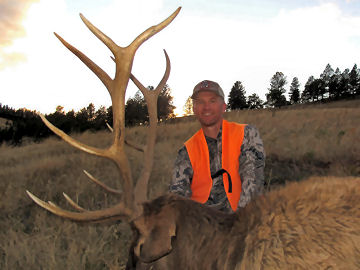
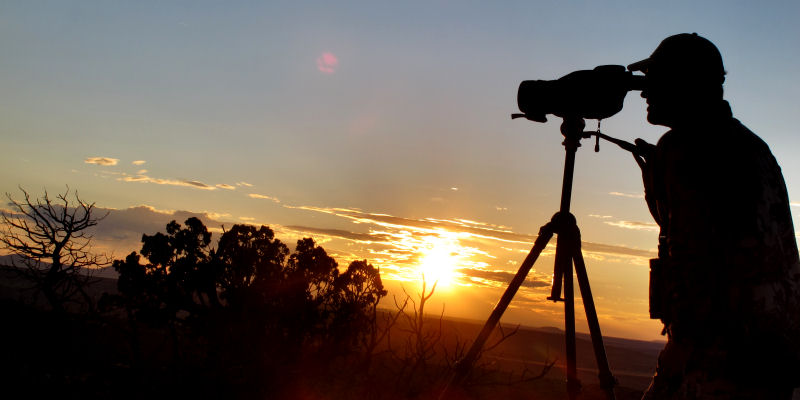
Rifle elk hunting on public land usually takes place in the post-rut and late season periods. A few lucky folks will draw a tag during the rut hunts, but this article will focus on the most common time periods for chasing bulls with a rifle. It is during these periods of greatest hunting pressure that you need to develop a better strategy than the other hunters who are chasing the same elk.
If you have read my other articles or been to my seminars, you know that I break elk hunting into five key periods. During each of these periods, elk have different priorities in their daily needs. The periods are:
• Early Season – August
• Pre-rut – early to mid-September
• Peak-rut – mid-September to early October
• Post-rut – mid-October to early November
• Late season – mid-November and later
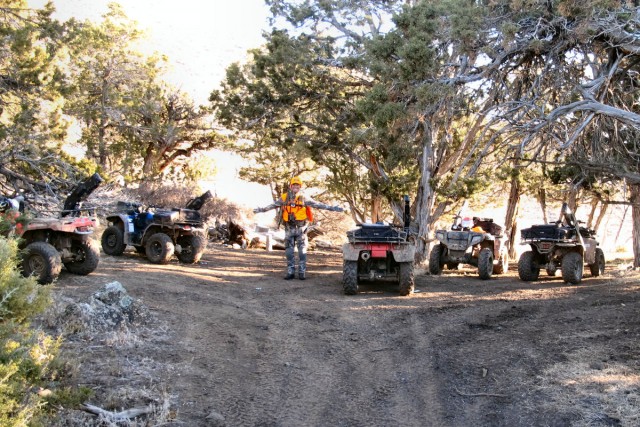 Each of these periods drive elk to look for different needs. On the heavily-pressured public lands, these calendar periods are far more pronounced than they are for elk on private lands, or for elk that are not subject to hunting pressure. Since we are looking for public land elk, specifically public land bulls, paying attention to their needs, and developing a hunting strategy around those needs, is the most consistent path to punching tags.
Each of these periods drive elk to look for different needs. On the heavily-pressured public lands, these calendar periods are far more pronounced than they are for elk on private lands, or for elk that are not subject to hunting pressure. Since we are looking for public land elk, specifically public land bulls, paying attention to their needs, and developing a hunting strategy around those needs, is the most consistent path to punching tags.
In the earlier calendar cycle, elk are looking for food. As the days shorten and the rut triggers, bulls are looking for one thing only – cows. By the last two periods, bulls – the subject of our attention – are focused singularly on surviving another rifle season. Sanctuary and survival is the primary need during the times most rifle seasons are going on.
During the post-rut and late season periods, the mature bulls are starting to pull away from the cow groups. If I am looking for a mature bull, I’m not going to be looking for cows. When I am looking for meat in my freezer, cow groups will lead me to the younger, 1.5 – 3.5 year old bulls.
When you are hunting public land elk in the last two calendar periods, hunting pressure is the biggest factor that influences elk locations and behavior. With pressure driving elk into new locations, hunters need to account for how that pressure is affecting elk during the days they have to hunt. All days of a hunting season are not the same when it comes to hunting pressure and its impact on elk. Understanding that during most rifle elk seasons the bulls are looking for sanctuaries to escape hunters, I break my rifle hunting into two different strategies for public land bulls – opening weekend and post opening day.
Opening Weekend
I call it Opening Weekend, but I’m referring to Days One, Two, and Three of the season. Elk are on a completely different routine for these days than they will be after a few days of hunters chasing them around the hills. Elk will keep their pre-season patterns until disturbed by hunters, and in my experience, nearly every elk is disturbed by the third day of season. This knowledge will give you an advantage, especially if you can carve out two or three days to scout and solve the riddle of their daily habits before opening day.
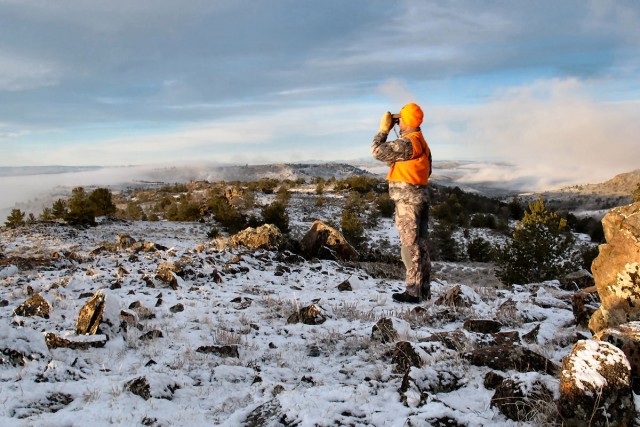 If my schedule allows me to hunt the season opener, I want at least two days to scout beforehand, hopefully three. I spend that time looking at as many places as possible, focused mostly on actual elk sightings. The reason I want elk sightings is that the older bulls are now away from cows, so sign – even just a week old – can be a bit deceiving.
If my schedule allows me to hunt the season opener, I want at least two days to scout beforehand, hopefully three. I spend that time looking at as many places as possible, focused mostly on actual elk sightings. The reason I want elk sightings is that the older bulls are now away from cows, so sign – even just a week old – can be a bit deceiving.
During this timeframe, older bulls are creatures of low-light. Seldom will you see the old guys out in mid-day, or even late morning, in these seasons. You need to be at the best glassing locations well before daylight and find another location of equally good viewscapes for the evening. Set up where you can see as much as possible. The goal is to locate where the older bulls have taken up their temporary location while trying to recover from the rut. By finding them from afar, you can figure out your plan to get closer on opening morning.
With any luck, your scouting will unveil some bulls. Most often, the bulls will be hanging out higher on the mountain than the cows. They are also likely to be found in rougher terrain with thick bedding cover nearby. Look at the head of a basin, maybe a small bench that interrupts the flow of steep contour lines. Look in areas that are slightly timbered, yet open enough for forage to exist. Bulls will find places where the needs of food and water are only a couple hundred yards from their primary need of security. You may find them in larger meadows, but that is unlikely; older bulls usually leave these spots for the cows and young bulls.
Once you find a bull or a bachelor group of bulls, stay with them until season opens. Without pressure, their daily habits should be pretty consistent. Opening morning is your best chance to kill that bull. In a perfect world, you will get even closer the night before season to ensure that he is still in that same small area continuing his same post-rut habits. If possible, identify your morning location for a shot, accounting for the east-rising sun and the downhill morning thermals. While it is still light, mark your way to this shooting location on your GPS, allowing you to follow that track in the morning darkness.
If ever there is a time that you need to be in position long before shooting light, it is opening morning. You’ve done your scouting, you’ve found your bull. If you have his pattern, the odds of a good shot are overwhelmingly in your favor on this morning. Make it count. If your bull is not here at daylight, there’s a good chance he found safety in the timber before sun could reveal him. Barring a hunter stumbling upon his mid-day bed, odds are the bull will be back in the evening. Do not go back to camp, don’t give up on your pre-scouted opportunity. Stay there and wait him out.
When the hills reek of hunter odor and gunshots echo throughout the canyons, old bulls remember what day it is. Bulls that have lived a few seasons head for their annual sanctuaries that hunters usually avoid due to distance or topography. They will head there over the next two or three nights, using the cover of darkness to protect them. When that move happens, it’s time to hit the reset button and develop a new plan – a plan that is far different than your opening day plan.
Post-Opening Day
If I cannot make it out for opening day, with a few days to advance scout, I prefer to hunt the last weekdays of the season. Weekday elk are less disturbed. The weekend crowd has pushed the older bulls into more predictable locations, albeit locations that require a chunk of boot leather to hunt. The later in the season, the more the elk are concentrated in these sanctuaries. Once you find a bull refuge, don’t tell anyone where it is. Bulls will use this same safe zone year after year after year. When they show up in these areas is dependent upon pressure and weather. And when they show up, you will be there, rifle in hand.
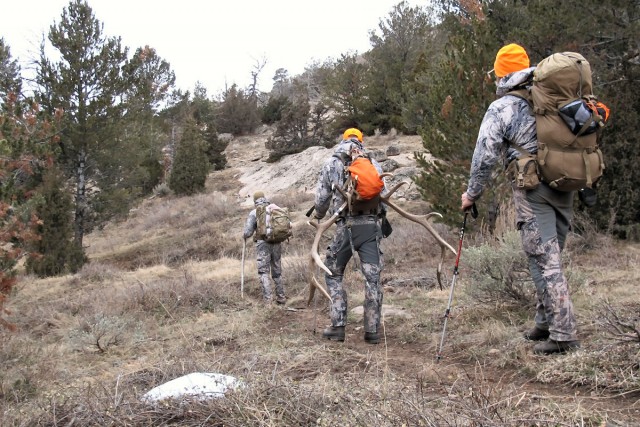 By the third day of the season, nearly all public land bulls are on notice that hunters are looking to convert them to food. This is where your desk scouting comes into play. Pressured bulls take refuge in the places hunters don’t want to go. They’ve lived through a few seasons by finding places we would prefer to avoid, and they use those same locales year after year. These sanctuaries are identifiable on your maps and Google Earth without ever stepping foot in your unit. Here are a few things to look for.
By the third day of the season, nearly all public land bulls are on notice that hunters are looking to convert them to food. This is where your desk scouting comes into play. Pressured bulls take refuge in the places hunters don’t want to go. They’ve lived through a few seasons by finding places we would prefer to avoid, and they use those same locales year after year. These sanctuaries are identifiable on your maps and Google Earth without ever stepping foot in your unit. Here are a few things to look for.
Find places that are at least a mile from motorized trails and roads. By now, there’s been a lot of traffic on most accessible pathways, and every study will confirm that elk avoid motors. Cross those spots off your map, and you will see there are now far less areas to look. You are not looking for huge expanses, just a space with water, some sparse feed nearby, and good escape routes will suffice. These hiding places can be as small as forty acres.
If you have snow, you’re in luck. Tracks will tell you right where the elk are hanging out. Even glassing tracks from afar can tell you a lot. One, two, or three sets of tracks will tell you that these are most likely bulls. Big swaths of tracks are likely groups of cows. If the tracks are lined out, the bulls are on the move. Tracks of bulls milling around are a sign of feeding. The bulls making those tracks are probably within a half-mile.
Without any snow, you need to head to a lookout where you can glass some of these lairs. A rock knob that lets you scour four or five small openings well away from trails will increase your odds of finding a late afternoon bull that was willing to leave his bed for a little feed. If you find bulls near their fortresses, you will likely find fewer hunters and bulls that are less likely to move out and vanish anytime soon.
By putting this simple strategy to work and using hunting pressure to your advantage, rifle hunting elk on public land can go from frustrating to exhilarating. Good luck!

